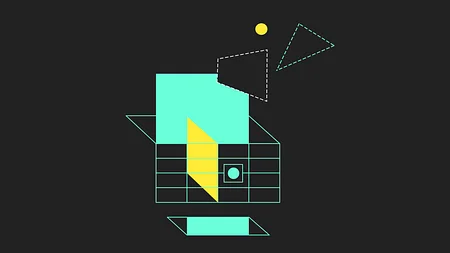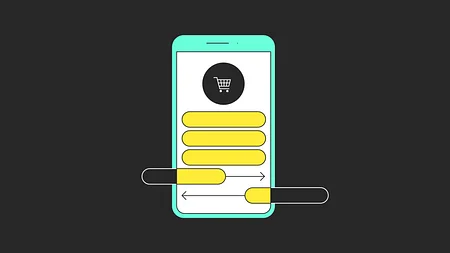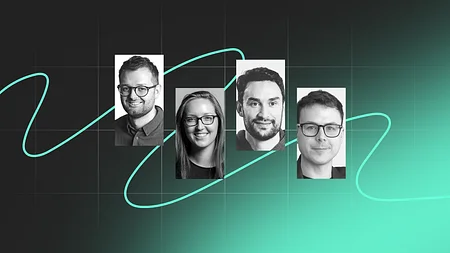Jobs to be done: Customers don’t want your bank

I speak to a lot of customers about how money fits into their lives. I’ve never come across anyone who said “what I really need is a bank” or more specifically banking products like credit cards or savings accounts. Customers don’t want your products, they want to achieve their goals.
People talk about helping their kids go to university or getting the best deal on their mobile phone. Of course, people require money and some kind of financial products to do these things. However, the cold reality for banks is that their commoditised products are not helping customers make progress towards these important jobs in their lives.
At 11:FS we help build truly digital next generation digital propositions. Central to this is grounding intelligent digital propositions in customer Jobs To be Done (JTBD).
What is Jobs To Be Done?
This is a question I’m asked a lot. The central of idea of Jobs To be Done is about understanding human motivations and the important outcomes people are shooting for in life.
We all have an idealised version of what we want but we are notoriously poor at articulating it. What we’re good at is sharing the annoying, time-consuming and difficult things standing in the way of our goals.
By understanding these important customer jobs, new ventures and product teams can design breakthrough propositions that create new value for customers. The increasing availability of open data, the permissioned use of customer data and widespread use of APIs is a game changer.
Product teams can now stitch together the latest technology to deliver smart contextual digital services that enable end-to-end customer experiences. We have the technology to create delightful customer propositions; the key is designing the proposition around the most important and under-served JTBD.
Products designed around the customer jobs are great for marketers too. It’s easier to make things people want to buy than make people want to buy things. The key is successfully articulating how the customer can make progress towards their goals using this product.
Showing customers how life can be less of a struggle helps remove the inertia and anxiety most have when thinking about adopting or switching to a new product or service.
Discovering Jobs To Be Done
So how do we do it? The best way to start uncovering those customer jobs is speaking to real customers. The key is to build up a better understanding of the customer’s desired outcomes by asking the right questions. Asking questions about existing product experiences is best avoided. For example, asking "How satisfied are you with your bank?" and "What can your bank do better?" will get a fairly muted response. Most customers don’t know what they want and struggle to think outside of how banking currently works.
Better questions would be:
- How do you manage your money across any given month?
- What big purchases have you got coming up?
- How do you intend to finance that?
- If I could be your financial assistant, what would you have me do?
These kind of questions will help you understand the process people go through managing their money. What solutions they hire, the DIY hacks they create, and how money fits into helping them reach their desired goals. Add in some contextual and life stage information into the mix and you can begin to build really rich customer profiles that are highly actionable when designing new propositions.
Once you’ve mapped out the qualitative JTBD framework and customer profiles, you can run a survey to measure, rank and validate your findings; to gain greater confidence in how you prioritise which jobs to focus on.
How businesses get proposition development wrong
It sounds straightforward enough but there are so many cases where I see businesses getting it wrong. Here are two of the most common scenarios:
Starting with ideation
Jumping straight into product ideation or design sprints without speaking to any customers. This is very common and motivated by the need to move quickly, but this is just the fast lane to the product graveyard of bad ideas and complete irrelevance. Not finding product market fit is the number one reason why new ventures fail and product market fit is all about creating something customers can’t live without.
Asking the wrong questions
Spending a lot of time asking the wrong questions and focusing research on the performance of existing products is the other common problem I frequently see. When you’re looking for white space in the market you need to look beyond existing product categories and focus in on customer outcomes.
The Benefits of JTBD
This is not meant to be an exhaustive of list benefits on Jobs To Be Done, but these are the key one's we’ve experienced using JTBD to build the next-generation banking services.
Creating a minimum loveable product
Defining a minimum viable product (MVP) can be difficult. It needs to be minimal enough to get it into market as quickly as possible whilst also delivering enough value to customers to test the products core hypothesis. How do you get this balance right and create a minimum loveable product (MLP)? With a well-defined set of customer jobs you can create a roadmap of features that are going to help customers make progress towards their goals from the first release.
For example, a customer’s desired outcome might be to take the family on holiday abroad next year. The customer finds it hard to save money and stay on top of their spending. For a new travel-focused challenger bank, a MLP and subsequent roadmap might look something like this:
MLP: sweeping the change in a savings pot
V2: + spending analysis and tips on how to spend less
V3: + switching utility bills and saving the money saved
V4: + partner with travel companies to offer discounts on advanced bookings
Right from day one, the MLP is offering tangible progress towards the customer’s goal without even thinking about saving or changing their spending (the pain point). The initial effect might be small but it is progress for the customer. Subsequent versions of the product add greater sophistication and have the potential to accelerate the customer’s progress towards affording that holiday.
Think outside of your category
Peter Drucker once commented that "the customer rarely buys what the company thinks it's selling". This is because customers ‘hire’ products to get a specific job done. When you understand the customer job you can focus on what’s important for the customer and the goal they are working towards.
Customers don’t want lawn mowers, they want short grass. This distinction is important because if you focus on making the best lawn mowers your whole business is disrupted by artificial turf or a genetically modified seeds for grass that only grows half an inch.
Jobs To Be Done helps you look asymmetrically across industry verticals and is a great way to identify disruptive opportunities. As technology advances the solutions hired to fulfil the job change, but the customer job remains fairly consistent over time.
When a new solution gets the Job Done better than the old one, we have hired the former and fired the latter.
Alan Klement
We’ve now reached a point where technology enables product teams to think about designing solutions that deliver end-to-end customer experiences rather than just commoditized products.
Let’s go back to the travel-focused challenger bank example. Using JTBD their core mission is helping people go on holiday every year. Financing that holiday is a key part of the customer journey and squarely placed in the traditional financial category. Helping customers discover the best holiday and book it cuts across a completely different category.
Orchestrating a wider set of ecosystem partners to deliver an end-to-end experience is helping customers get the important things in life done rather than flogging a product. Experiences like these can elevate the bank from being historically a very functional provider to one that’s playing an important role in delivering value for their customers key life goals.
Customers want to live better with money
Customers don’t want your bank, or your banking products. It’s not exciting and in most cases they buy products based on convenience and price. But money is central to everyone’s life, it's an enabler to everything we do. This is why digital banking is only 1% finished. The next 99% needs to intelligently fit around customers' lives, not force customers to fit their lives around banking products.
Watch out for more blog posts on Jobs to be Done written by our in-house expert, Ryan Garner.
Ryan organises a Meetup where you can talk to him and others all about jobs to be done in practice or you can email him at ryan@11fs.com or find him on Twitter @ryangarner



